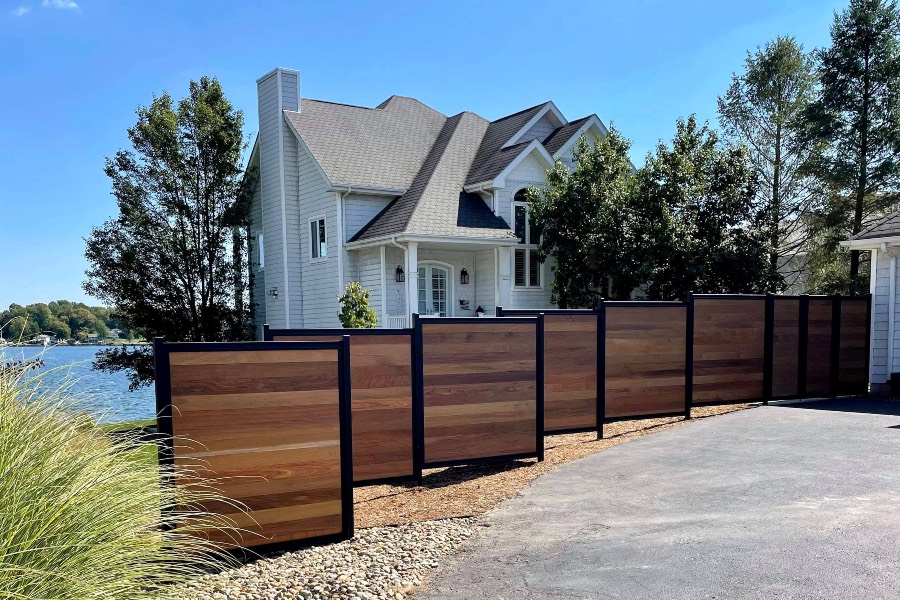All Categories
Featured

As sustainability ends up being a concern for homeowners and services alike, the need for environmentally friendly items, including secure fencing materials, has risen. Traditional secure fencing options such as vinyl, metal, and wood can have adverse environmental influences, however there are now a number of eco-conscious options to consider. Choosing green fence products not just helps in reducing your carbon footprint but additionally adds to a much more lasting and all-natural environment.
- Bamboo Fencing. Bamboo is just one of the most eco-friendly fence alternatives available. Recognized for its fast growth and very little ecological impact, bamboo is an extremely renewable resource. Unlike conventional hardwoods, bamboo can be collected in a couple of years and regrows rapidly, making it a lasting option for fencing. It's strong, durable, and immune to parasites, offering a natural and elegant option for homeowners.
Conveniences: Bamboo is fast-growing, lightweight, and lasting. It needs less plant foods and chemicals compared to various other plants, making it a low-maintenance alternative. Factors to consider: While bamboo is durable, it may require regular upkeep to secure it from weathering and all-natural wear. It can additionally be susceptible to splitting in cooler climates. 2. Recycled Materials. Fences made from recycled materials are ending up being significantly preferred as an eco-friendly alternative. These fences are made from post-consumer plastic, recovered wood, and various other recycled products, maintaining waste out of landfills. Making use of recycled products minimizes the demand for brand-new raw resources, reducing ecological degradation.

Perks: These fencings help in reducing waste and conserve natural sources. They are also often low-maintenance and long-lasting. Factors to consider: While recycled fences can be durable, the aesthetic appeals may not always match standard fence alternatives. Nevertheless, lots of designs are currently offered that resemble the appearance of wood or stone. 3. Composite Fence. Compound fence is made from a mix of recycled timber fibers and plastic, providing the appearance of timber without the ecological impact. Several composite fencings are made from recycled web content, additional enhancing their environment-friendly status. These fences are lasting, need minimal upkeep, and do not need to be treated with hazardous chemicals like typical wood fences.
Advantages: Compound fences are durable, resistant to rot, and call for little upkeep. They additionally give a similar aesthetic to timber without deforestation issues. Considerations: While they are low-maintenance, composite fences may be a lot more costly than standard timber or vinyl choices. The manufacturing process can likewise be energy-intensive. 4. Cedar and Redwood Fencing. Cedar and redwood are all-natural timber products that are frequently thought about extra green compared to other woods. These sorts of timber are normally immune to degeneration, insects, and wetness, which minimizes the need for chemical treatments. Additionally, these trees are grown in sustainable woodlands, making sure that they are gathered responsibly.
Conveniences: Cedar and redwood are both long lasting and normally beautiful products. They supply all-natural resistance to bugs and rot, which aids minimize the need for chemical treatments. Factors to consider: These timbers can be a lot more pricey than various other choices. They additionally call for occasional maintenance, such as securing or staining, to ensure durability. 5. Living Fencings (Hedges and Bushes) Living fencings, made from hedges, trees, or hedges, are a green choice that also provides all-natural personal privacy and visual charm. Plants such as privet, boxwood, bamboo, and arborvitae are generally used for producing thick, environment-friendly fences. These living barriers help with noise reduction, improve air quality, and offer environment for local wild animals.
Advantages: Living fences promote biodiversity, enhance air top quality, and boost the visual allure of your building. They likewise absorb co2 and add to a greener atmosphere. Considerations: Living fencings need upkeep, such as pruning and watering, to guarantee they expand properly. They may not give the very same level of safety as standard fence products. 6. Stone and Reclaimed Brick Secure Fencing. Stone and reclaimed block fences are one more environment-friendly alternative. These products are sturdy, call for minimal maintenance, and have a long life-span. When recovered from old buildings or structures, they help in reducing the demand for brand-new materials and stop waste from going into garbage dumps.
Perks: Rock and block are sturdy, weather-resistant, and offer an ageless, classic aesthetic. Recovered materials likewise have a marginal environmental impact. Considerations: The installment of rock and brick fences can be labor-intensive, and the materials may be more costly than various other choices. The lasting longevity and reduced upkeep prices can make them a worthwhile financial investment. Verdict. Selecting an eco-friendly secure fencing product is a clever method to lower your environmental effect while improving your property's privacy and aesthetic allure. Bamboo, recycled materials, composite fencing, and living fences all provide lasting options that minimize waste, conserve resources, and advertise a greener way of life.
By selecting among these green fence alternatives, you add to the protection of the setting while producing a gorgeous, practical outside room. The appropriate material will certainly rely on your preferences, climate, and the degree of upkeep you agree to offer, yet felt confident that there are numerous eco-conscious selections that align with your lasting way of living.
Latest Posts
Explore Oil Changes & More: Complete Auto Care Solutions from Montclare Auto Repair
Published May 29, 25
1 min read
Explore Oil Changes & More: Complete Repair Options from Montclare Auto Repair
Published May 25, 25
1 min read
Check Out Affordable Auto Repairs with Montclare’s Limited-Time Service Specials
Published May 22, 25
1 min read
More
Latest Posts
Explore Oil Changes & More: Complete Auto Care Solutions from Montclare Auto Repair
Published May 29, 25
1 min read
Explore Oil Changes & More: Complete Repair Options from Montclare Auto Repair
Published May 25, 25
1 min read
Check Out Affordable Auto Repairs with Montclare’s Limited-Time Service Specials
Published May 22, 25
1 min read